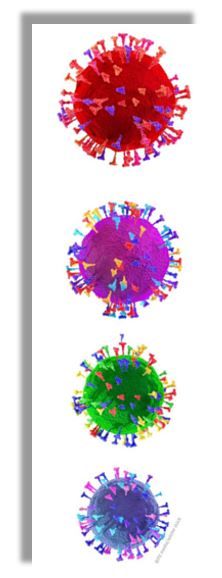COVID-19 Reinfection: Snapshot of the Pathology
COVID-19 reinfection is proving more commonly than originally believed possible, largely due to the continued mutation of COVID-19 and subsequent emergence of new variants.
One study, presented last week at the 30th Conference on Retroviruses and Opportunistic Infections (CROI 2023), examined other factors that may facilitate COVID-19 reinfection.

From March 2020-March 2022, the investigators recorded clinical and demographic data from 3303 study participants. Of this cohort, 2344 participants experienced 2 PCR-confirmed COVID-19 infections, separated by at least 90 days and with a negative test in between incidences. Additional collected data included age, sex, comorbidities, adjusted morbidity group, hospitalization, symptomatology, COVID-19 tests, antigen tests, serology, and vaccination status.
Data were analyzed by the Northern Metropolitan Clinical Laboratory Microbiology Department, of the Germans Trias i Puhol Hospital in Badalona, Spain. Temporal data were encoded with Python, and demographic characterization was performed under R.
Of the 2344 participants with confirmed COVID-19 reinfections, 72.2% were women and the average age was 45 years. Age density analysis showed 3 peaks of reinfection, at 24, 45, and 85 years. The investigators hypothesized the 24-year-old peak resulted from young people exhibiting less caution, they traced the 45-year-old peak to health care workers, and the 85-year-old peak correlated with people living in nursing homes. All 3 of these age groups were prone to testing for COVID-19.
Broken down by health status, 86.2% of reinfected participants had at least 1 chronic condition, and 40.5% of them had chronic conditions in ≥4 systems (based on adjusted morbidity group assessment). Notably, 75.2% of reinfected participants aged <26 years had at least 1 chronic condition.
A total of 5.2% of participants were hospitalized for a COVID-19 infection; of the hospitalized cohort, 70.2% were hospitalized only during their first infection, 8.3% were hospitalized during reinfection, and 5% were hospitalized during both infections. The study authors suggest the severity of the second COVID-19 infection could be due to a diminished immune system after initial infection. Additionally, only half of the latter 2 groups of hospitalized patients were vaccinated at the time.
Density analysis showed time between reinfections had 3 peaks, at ~200, ~400, and ~600 days. These 3 peaks correlated with different waves of COVID-19. There was a decrease in reinfections 40-100 days after COVID-19 vaccination, the period during which vaccine protection is most robust.
The investigators surmised that COVID-19 reinfections were more prevalent among women. Independently of age, individuals who were immunocompromised or whose health status was otherwise undermined were more susceptible to reinfection.
Both genetic variability of the COVID-19 variants and time between infections significantly affected reinfection. The majority of COVID-19 infections did not require hospitalization, and “vaccination seems to have a short protective effect on reinfection,” the study authors concluded.
This article originally appeared on our partner site ContagionLive.